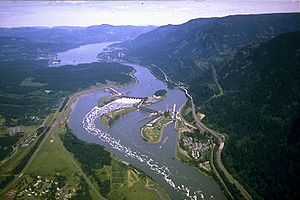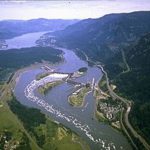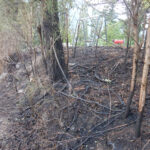COMMENT: Nuke the moon!
Okay, time to stop worrying about climate change. Turns out we can just change the climate. How? Well, maybe we should just nuke the moon. (Apparently if we can shift its orbit to block more sunlight, oil companies can keep drilling, the politicians in their pockets can keep doing nothing and gas-guzzling SUV drivers can laugh at the doomsday warnings of scientists. I kid you not.)
Welcome to the wacky world of geo-engineering where geeks compete to find technical remedies for the fossil-fueled mess we’ve got ourselves into.
As Joyce Nelson reveals in an article in a recent issue of Watershed Sentinel, funding for geo-quick fixes is pouring in from governments (including Canada’s), from the oil industry (including the tar sands folks) and from billionaires like Bill Gates, Edgar Bronfman Jr and Sir Richard Branson. (Branson wants everyone to stop worrying about climate change so he can go ahead with plans to launch space tourism. I kid you not.)
Too much carbon dioxide in your atmosphere? You could turn off the tap by fast tracking development of electric cars and investing in clean energy. Or you could fund mad schemes to develop money-making ways to suck up the CO2.
Before reneging completely on Canada’s commitments to reduce its greenhouse gas emissions, the Harper government and the government of Alberta were relying on – and continue to heavily fund – carbon capture and storage (basically, pumping CO2 underground and hoping for the best). As David Suzuki points out, not all that long ago we thought spraying DDT everywhere was a good idea.
Here are some other bright carbon capture ideas:
· Dump mega-tonnes of limestoneinto the oceans to change their acidity in order to soak up extra CO2.
· ‘Fertilize’ the oceans with ironto increase phytoplankton which may (or may not) sequester CO2.
· Genetically modify plantsto absorb more CO2 or (commercially, of course) manufacture ‘synthetic trees’ to dramatically accelerate an actual tree’s ability to capture carbon.
If none of these work out, we can always try ejecting CO2 from the atmosphere at the Earth’s poles, using the planet’s electromagnetic field and lasers. (I kid you not.)
Alternatively, the geo-engineers reckon we could cool things down by preventing some of that pesky sunshine reaching the planet.
Here are some brilliant ideas for deflecting sunlight:
· Twice a year, blast sulphate-based aerosolsinto the stratosphere. (What might this do to the ozone layer we’re trying to protect? Oh, please don’t ask awkward questions.)
· Keep the petroleum-based plastics industry busy by covering four million square miles of desert with white plastic.
· Use thousands of ships with turbines to propel salt sprayfrom the oceans into low-lying clouds to whiten them.
· Launch 16 trillion glass disks into spaceto create a sunshade in orbit 1.5 million kilometres above the planet. Price tag for this sunshade? Four trillion dollars.
Forget for a moment the number of the earth’s problems (and not just the climate-related ones) which could be solved with $4 trillion, and consider this. As Alan Robock of Rutgers University points outin a list of reasons why we should not rush to embrace geo-engineering, blocking or deflecting sunlight would dramatically diminish the capacity of solar power to provide clean energy. (A good reason – as if one was needed – to build solar panels in the desert, rather than covering it in plastic.)
Robock also warns that geo-engineering proposals could permanently turn our sky the red and yellow depicted in Edvard Munch’s The Scream. He wonders what sort of psychological impacts this might have on humanity. So do I.
Miranda Holmes is an associate editor of Watershed Sentinelmagazine. For more information about “geo-clique” funding and driving this mad science, go to www.watershedsentinel.ca/content/geoengineering.


























Comments